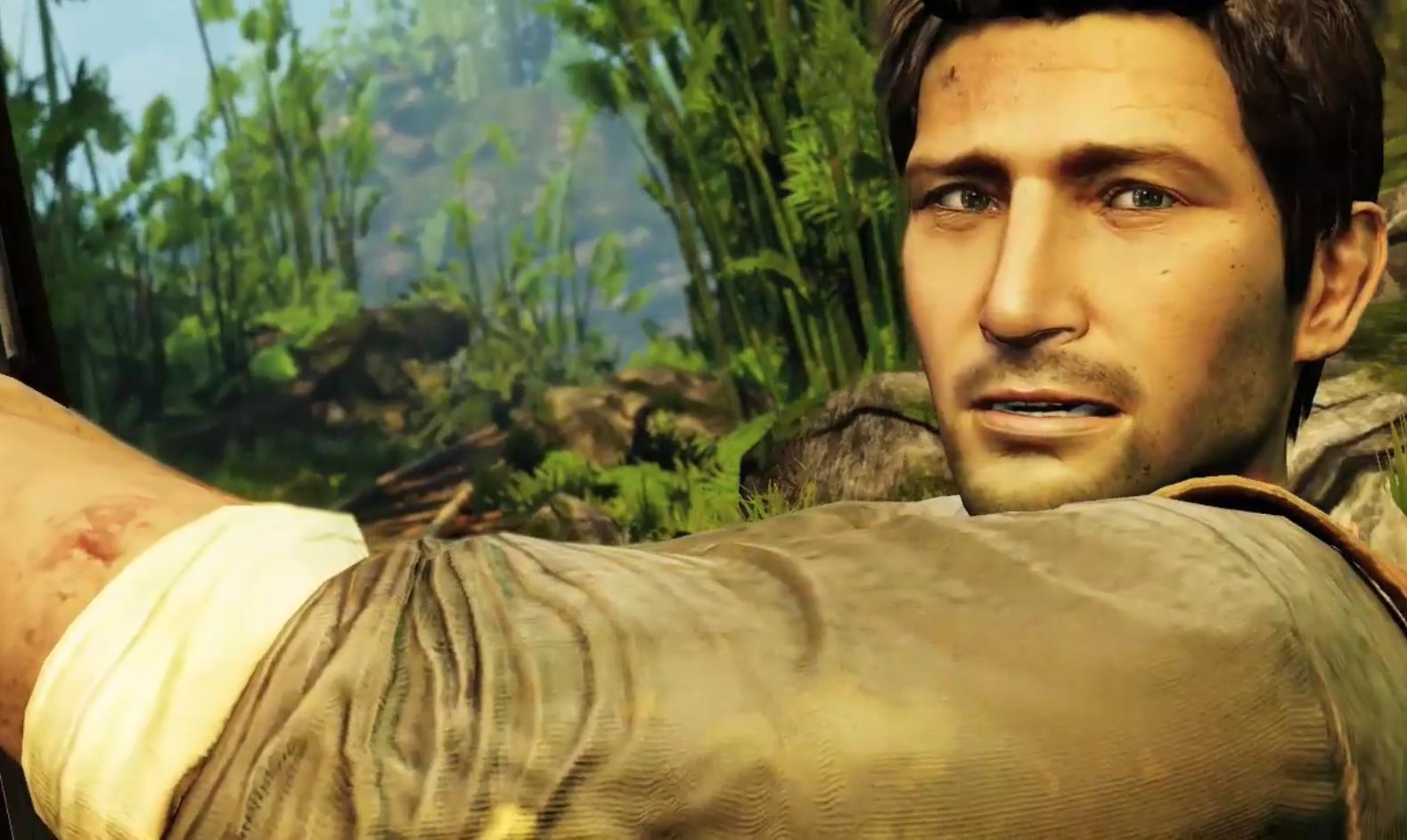
It’s already been pretty well established that Far Cry 3’s protagonist doesn’t work. Here’s how close they came to glory.
Jason Brody is meant to be a panicked tourist thrown face-first into the insane violence we take for granted. The opening tutorial casts you as the helpless NPC of an escort mission, freaking out as your brother breaks you out of prison with the easy violence of a real hero. “This is insane!” whispers Jason, as your savior casually throws a knife into a pirate’s throat. “Keep it together, champ,” he reassures you, with a perfect grin.
In a couple of minutes, that guy is vomiting blood onto the dirt as you try to hold a bullet-hole in his neck closed. This is what happens to heroes. When he dies, Jason is forced to take up the mantle of Videogame Protagonist – and in that moment, you really feel what an insane thing that is to be. Flailing at the controls, you fuck up your first kill and tumble wild and bloody into the river.
Alas, it all falls apart too soon. Minutes after Jason gains consciousness and you gain control, you’re single-handedly killing five men, each shot landing with perfect, cold efficiency. You are ruthless and untouchable, the very model of a modern action hero. The violence no longer feels insane, chaotic, meaningful; half an hour in, Far Cry 3 goes Full Videogame.
The story continues, apparently unaware that it’s main character arc has been abruptly completed. Jason grows more and more out of touch with civilization and reality, even as he saves his friends and gets closer to returning home. “When I killed a man for the first time, it felt… wrong,” he confides. “Which is good, right? But now… now it feels like winning.” It would be a beautiful moment, if only violence hadn’t felt like winning from the first time you picked up a gun.
Jason’s stumbling path down to Action Hero is thrown into light by a sharp dichotomy in the characters. The friends you rescue feel like real people; their voice acting is simple, broken, and naturalistic. Everyone outside is an NPC: Exaggerated, stylized caricatures that are all obviously insane. Spending all your time out in the world, you take everything they say for granted until you have to return to your friends. “I got this knife from an ancient chinese tomb,” Jason explains to his girlfriend. “It’s going to save us.” It feels like telling your mum what you’ve been doing in Skyrim.
That narrative arc is so good that it’s heartbreaking that it’s never reflected in the shooting. Imagine: starting the combat as a survival horror experience that you have to flee from as much as possible, then slowly getting better and better weapons and skills until the game becomes an easy, violent toybox. Shadowing that growing power fantasy with a narrative that suggested that you were becoming worse as a person the more skilled you became as a character – that’s brilliant.

The mechanics they went with point to a pretty common way of thinking about shooting. There’s only one good way to do guns: Precise, efficient, and instantly lethal. Guns that are chaotic and unmanagable feel bad. Your character should respond instantly to your input. Wrestling to control a wildly out-of-control character isn’t fun.*
Going for that efficiency has given almost every shooter protagonist the same character. For a cold, ruthless machine like Adam Jensen, these mechanics fit. When the hero is a sloppy everyman like Jason Brody or Nathan Drake, though, you suffer this severe disconnect. I don’t think the problem is that these two average joes kill so many people – I think it’s the fact that they seem like completely different characters when they do it.
In a lot of ways, this problem is an inescapable part of AAA development. I doubt anyone knew anything about Jason Brody when they started making the shooting mechanics of Far Cry 3. Given a blank slate of “Make the guns satisfying,” the designers went for lethal efficiency. When the writers came along months later, they ignored those mechanics in exchange for making the most interesting main character they could.
I can’t blame either of those parties, but I’d love to see shooters convey more character. The gleeful joy of Mario’s jumping, the panic of Amnesia’s sobbing, fumbling protagonist, the brute, cackling power of TF2’s heavy. Let’s see some shooters that are made by thinking about the character, not the guns.
*An understandable idea, but I think Messhof’s output pretty much disproves that completely (Try jetpack basketball).











 It’s late, and everyone’s off the street except a few derelicts and weirdos like you. All is quiet. The moon looms low and massive over the landscape. That’s the Witching Hour.
It’s late, and everyone’s off the street except a few derelicts and weirdos like you. All is quiet. The moon looms low and massive over the landscape. That’s the Witching Hour.

